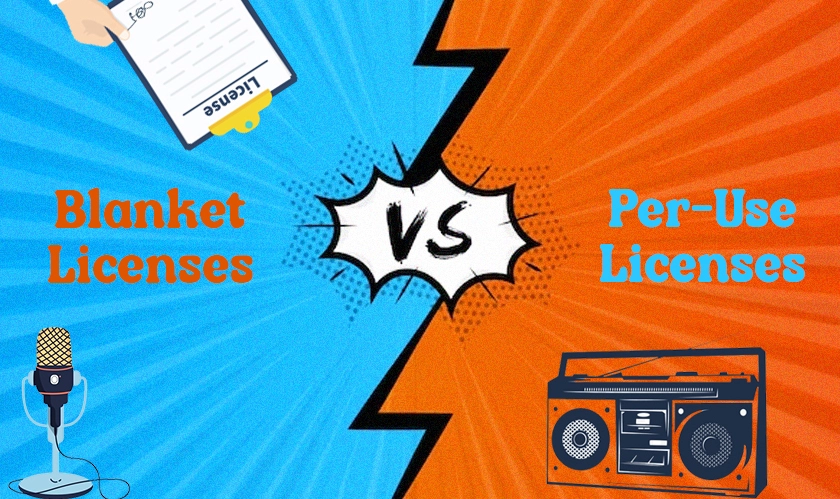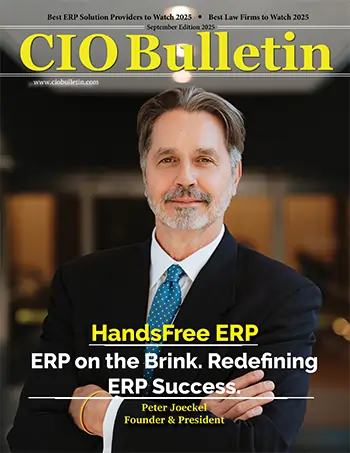Home Industry Media and entertainment Comparing Blanket Licenses vs....
Media And Entertainment

CIO Bulletin
27 Febuary, 2024
Internet radio has become increasingly popular in the last decade, offering listeners a range of music genres and personalized streaming experiences. However, behind the scenes, there exists a web of licensing agreements that allows these services to play copyrighted music legally. Two common types of licenses used by internet radio platforms are blanket licenses and per-use licenses. In this article, we will explore the distinctions between these two licensing models and their impact on both artists and streaming platforms.
Understanding Blanket Licenses
A blanket license for Internet radio is an agreement between a streaming platform and a collective rights organization that represents copyright owners. Under this license, the platform pays a fee in exchange for the right to stream works from the organization's catalog without requiring permission for each individual song. This arrangement offers simplicity and convenience to streaming platforms as they can access a range of content through an agreement.
Benefits of Blanket Licenses
Streamlining administrative tasks:
With blanket licenses, online radio platforms avoid the process of obtaining licenses for every track played on their service. Instead, they make one payment to the collective rights organization to cover all copyrighted content.
Access to extensive music catalogs:
Accessing extensive music catalogs: Because collection societies represent a range of artists and have a repertoire at their disposal, platforms that utilize blanket licenses can provide listeners with a wide selection of songs without the need for separate agreements for each individual track.
Compliance with copyright laws:
By obtaining blanket licenses from collection societies, internet radio platforms ensure that they adhere to copyright laws by compensating musicians for their creative works.
Limitations of Blanket Licenses
Understanding Per-Use Licenses
Per-use licenses, as the name implies, are agreements where streaming platforms pay copyright holders for each track they broadcast. These licenses require real-time tracking and reporting of every song played to ensure royalty distribution. While this approach may involve tasks, it offers transparency in compensating artists and potentially higher earnings for lesser-known musicians.
Benefits of Per-Use Licenses
Transparent artist compensation:
A fair system for artists' compensation is through per-use licenses, where musicians receive royalties based on the number of times their songs are played on a streaming platform. This approach ensures that artists are rewarded appropriately for the popularity and usage of their work, promoting fairness in the industry.
Nurturing independent artists:
Furthermore, independent or lesser-known artists find per-use licensing models beneficial as they have control over their music and can negotiate licensing terms that suit their specific needs. This helps level the playing field by providing opportunities for emerging talent.
Limitations of Per-Use Licenses
Administrative burden:
Firstly, there is a burden associated with this model. Unlike blanket licenses, per-use licensing requires tracking and reporting of each song played on a streaming platform. This process can be time-consuming and resource-intensive for both the platform and copyright owners.
Limited music catalog:
Additionally, relying on per-use licenses may result in a limited music catalog for streaming services. They must negotiate agreements individually for each track they want to include in their collection, which can restrict the range of content compared to platforms with blanket licenses that feature collections from collection societies.
Conclusion:
The decision of whether to use a blanket license or a per-use license depends on factors, including the size of the streaming platform, desired music catalog size, administrative capabilities, and fairness in compensating artists. Larger platforms may find blanket licenses suitable as they have access to extensive catalogs managed by collection societies. On the other hand, smaller platforms or those focused on supporting artists can benefit from per-use arrangements that provide transparency in payment.
Ultimately, regardless of the chosen licensing model, it is crucial to ensure that artists receive compensation. From a user's perspective, both blanket licenses and per-use licenses contribute to creating an internet radio landscape that offers an enriching music experience.







